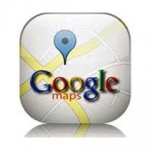 Microsoft has managed to give its consumers yet another reason to be amused with a 3D effect. The software giant has its team working hard to give the consumers a real-like effect. This development would give effect for lip syncing and realistic facial expressions, but it would be a bit expensive and time consuming to capture and setup the data required. This replacement is in process and would be out in the near future. It has been reported that the core system has been improved and the input required for recreation of an accurate human face representation is even reduced.
Microsoft has managed to give its consumers yet another reason to be amused with a 3D effect. The software giant has its team working hard to give the consumers a real-like effect. This development would give effect for lip syncing and realistic facial expressions, but it would be a bit expensive and time consuming to capture and setup the data required. This replacement is in process and would be out in the near future. It has been reported that the core system has been improved and the input required for recreation of an accurate human face representation is even reduced.
The working for facial capture of motion capture is basic. A person’s face needs to be covered in balls which should then have a number of common and extreme facial expressions. These expressions are recorded from more than one angle. Then it is converted to record the movement of one’s face and finally turns into a usable facial rig.
The software giant’s research team from Beijing has been able to know how can 3D scans be combined with motion capture. It has even been able to know the minimum criteria for scanning a recreated face accurately.
The explanation given by Microsoft was basic detailing, but instructive of the working. It said that three actors were used whose faces were highly mobile. The first step then was where marker-based motion capture was used by the researchers. This was done when 100 reflective dots were applied to the faces of each actor. Next step was video rolling, where the actors made a series of facial expressions which were pre-determined, enabling a set of data roughly on hoe different expressions are made when a face changes. This was then used in 3-D scans.

The minimum number of scans which were required to reconstruct facial accurately. It was determined because of the marker-based data which was captured. The following step was when high-fidelity facial scans were captured with the a laser scanner. Then in the marker-based facial data these scans were aligned along with the frames correspondingly. Finally there was registration of the facial scans with each other and a new algorithm was used for this registration.
This new system has a few additional features which allows the users to input vigorously active features to any face which is captured. To list a few examples, one can add wrinkles or other facial features which work according to the movement and expression of one’s face. The assumed facial features in this list would be swollen facial area, broken nose, a scar or can even be a mask. The team is however working harder to give a much more realistic look.
Talking about the gaming world, Microsoft has not revealed whether Windows PC and XBOX 360 would get an extension to this new technology or no. There is yet another gadget which could in future make use of these ideas to some extent to capture 3d faces which is known as Kinect motion controller. This motion controller might give its gamers an option to not only capture but even use one’s own face in a specific game. Gamers would love this gadget when this technology is integrated in Kinect.
For the time being, the project heads towards SIGGRAPH for a presentation in before the end of this week. This would even give time to them for research and would develop as a product. This would be beneficial for both players as well as game developers who would be able to enhance the gaming experience.


